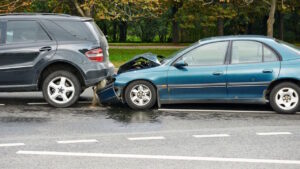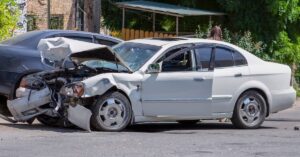Hit-and-run accidents are a serious issue. When a driver leaves the scene, it can complicate the aftermath for everyone involved. The legal, financial, and emotional consequences are often severe. In this blog, we will explore the various consequences of hit-and-run accidents and how they affect victims, drivers, and the legal system.
Legal Consequences for the Driver Who Flees
One of the most significant consequences of a hit-and-run accident is the legal penalty for the driver. In many places, leaving the scene of an accident is a criminal offense. Depending on the severity of the accident, the driver may face fines, loss of their driver’s license, or even jail time. These penalties increase if someone is seriously injured or killed in the crash.
Drivers are legally required to stay at the scene, exchange information, and provide assistance if necessary. Failing to do so violates traffic laws and shows disregard for public safety. In cases where the driver is caught, the court may impose harsh sentences to deter others from fleeing accident scenes in the future.

Difficulty in Identifying the Responsible Party
When the driver leaves the scene, identifying them can be challenging. This makes it harder for the victim to pursue legal action or file an insurance claim. Law enforcement may rely on eyewitnesses, surveillance footage, or vehicle damage to track down the person responsible.
Unfortunately, not all hit-and-run drivers are caught. In those cases, victims are left without the ability to hold anyone accountable. This can be incredibly frustrating for those seeking justice. It also limits the victim’s ability to receive compensation for damages, leading to financial strain.
Financial Burden on the Victim
Hit-and-run accidents often leave the victim with significant financial burdens. Without the responsible driver’s information, it becomes difficult to file a claim against their insurance. This forces victims to rely on their own insurance, which may not cover all expenses. Repairs, medical bills, and lost wages can add up quickly.
In some cases, victims may have to pay out of pocket for damages. This can be devastating, especially for those who already face tight financial situations. If uninsured motorist coverage is not part of the victim’s policy, the financial strain can be even worse.
Emotional Trauma for the Victim
The emotional toll of a hit-and-run accident can be severe. Not only do victims face the stress of dealing with injuries or property damage, but the act of fleeing can make them feel abandoned or disrespected. This emotional distress often lasts long after the physical injuries heal.
Victims may experience anxiety, fear, or anger as a result of the accident. In some cases, post-traumatic stress disorder (PTSD) can develop, especially if the accident was particularly traumatic. Therapy and support groups may be needed to help victims cope with these feelings over time.
Impact on Insurance Premiums
After a hit-and-run accident, victims may see an increase in their insurance premiums. Even though the victim is not at fault, their insurance company may raise rates to account for the claim. This adds another layer of financial hardship, especially for those already paying high premiums.
If the victim has uninsured motorist coverage, it may help offset some of the costs. However, making a claim through personal insurance can still lead to higher rates. The frustration of being left to deal with these consequences, despite being innocent, can add to the emotional strain.
Challenges in Filing Insurance Claims
Filing an insurance claim after a hit-and-run accident can be more complicated than in a typical accident. Without the other driver’s information, it may be harder to prove who was responsible. This can delay the claims process or even lead to a denial of coverage.
Victims should gather as much evidence as possible to support their claim. Photos of the damage, witness statements, and a police report can help strengthen their case. Cooperation with law enforcement is also essential, as tracking down the driver can make the claims process easier.
Civil Lawsuits Against the Driver
If the hit-and-run driver is identified, the victim may choose to file a civil lawsuit. This allows the victim to seek compensation for medical bills, vehicle repairs, and emotional distress. A successful lawsuit can provide the financial relief that insurance might not cover.
However, filing a lawsuit requires time and money. Victims must be prepared for the legal process, which can be lengthy and stressful. Even if the driver is found, there’s no guarantee that they will have the resources to pay damages. This makes civil lawsuits a complicated but sometimes necessary option.
Public Safety and Moral Responsibility
Beyond the legal and financial aspects, hit-and-run accidents raise questions about public safety and moral responsibility. Leaving the scene of an accident shows a lack of concern for others’ well-being. It’s a dangerous behavior that puts everyone at risk.
When drivers flee, it delays the response time for emergency services, which can worsen the outcome for injured victims. Hit-and-run accidents undermine trust in the community and create a sense of injustice. It is crucial for drivers to stay at the scene and fulfill their responsibilities to others on the road.

Conclusion
Hit-and-run accidents have wide-ranging consequences, both for the fleeing driver and the victim. Legal penalties, financial hardships, and emotional trauma are just a few of the challenges that arise. The complexity of these accidents makes it vital for victims to seek legal and insurance advice. For drivers, staying at the scene and taking responsibility is not only the law but also the right thing to do.
FAQs
What should you do after a hit-and-run accident?
Call the police, gather evidence, and seek medical attention if needed.
Can insurance cover a hit-and-run accident?
Yes, if you have uninsured motorist coverage, your insurance may help.
What are the penalties for leaving the scene of an accident?
Penalties include fines, jail time, and license suspension, depending on the case.
How can the police identify a hit-and-run driver?
Police use witness statements, surveillance footage, and vehicle damage for identification.
Can you sue a hit-and-run driver if they are found?
Yes, victims can file a civil lawsuit to seek compensation for damages.
